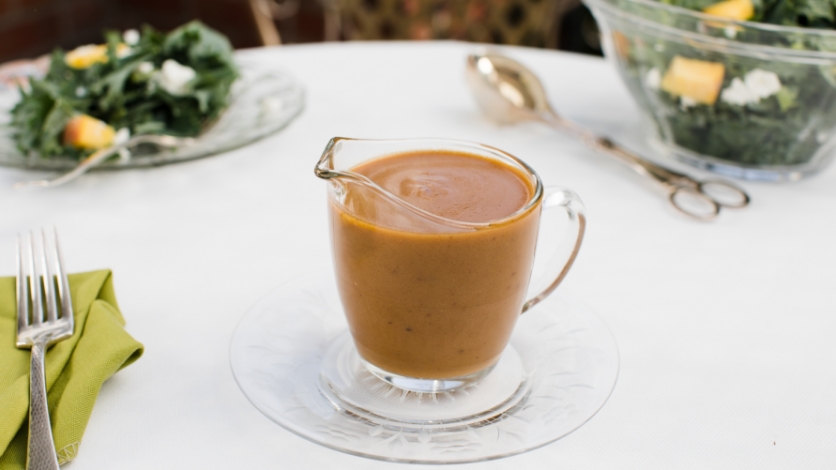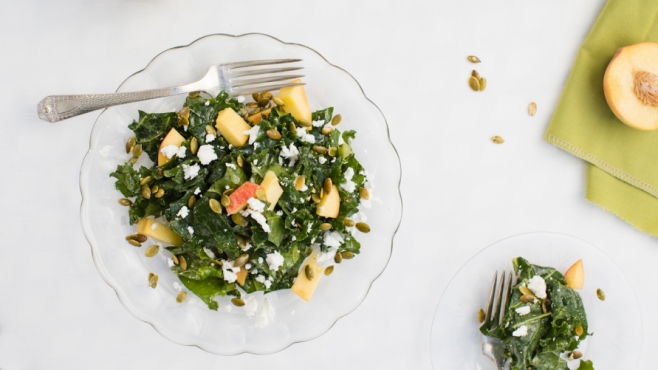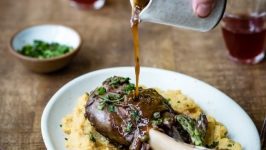Stone Fruit-- Don't Let the Name Deceive You!

The term “stone fruit” conjures up all manner of imaginary offerings, none of which is likely to cause a person to salivate in hungry anticipation. Be of good cheer readers, this article is not about rock-like, tooth-chipping fruit, but rather drupe, the term used for fruit with a large stone inside. A drupe is an indehiscent fruit, which means it does not open to release seeds when ripe. Its outer fleshy part surrounds a hardened single shell that has a seed inside. Peaches, nectarines, plums, mangoes, cherries, apricots and certain hybrids are some well-known examples of stone fruit.
As the fruit hangs by its stem from the tree branch, it is supported by this stone, which provides a means for nutrients to pass from the tree to the growing fruit. Stone fruits are a species of Prunus and are members of the rose family.
Stone fruits are highly perishable because of their high levels of antioxidants and do not store well. They are high in vitamins A and C, fiber and potassium. This is particularly true for peaches, apricots and nectarines, which are low in fat, calories and sugar. Their sweet flavor helps to satisfy a desire for less healthy snacks and, because of this, helps with weight management.
There are two types of peaches: clingstone and freestone. Clingstone fruit doesn’t fall off its pit, making it good for eating but hard to slice. The freestone variety is easy to separate from its pit. You cannot tell the diff erence between the two by their looks, but clingstones are usually the first to arrive at farmers’ markets. Nectarines have smooth skin whereas peaches are fuzzy. Like peaches, the nectarine’s flesh may be yellow or white. The advantage of nectarines is that they have no skin to peel. In actuality, they are smooth-skinned peaches.
Peaches, nectarines, plums and their hybrids are best when ripened at room temperature, stem-end down. It is best not to refrigerate this fruit before it is ripe as it may cause the skin to wrinkle and become mealy. To speed up the ripening process, put peaches and plums in a paper bag on the counter for 24 hours. Ripe fruit may be stored in the refrigerator for a few days.
Cherries must be picked when ripe and can be eaten as soon as purchased. They will keep in the refrigerator for up to three days if loosely covered. Sweet cherry varieties include Bing, Rainier and Sweetheart and are sold fresh. Most cherries grown are of the sour variety, which can be canned, frozen or dried. Both sweet and sour cherries are good sources of vitamin C and potassium and contain antioxidants. Cherry juice has been shown to fight inflammation and treat muscle pain.
Apricots are rich in pectin. Their fruit is creamy in texture when eaten ripe, and meaty when dried. Th ey are delicious either canned or dried. Priums are a plum hybrid which is more like an apricot than a plum. They look, smell and taste more like apricots than plums but are juicier and firmer.
There are two varieties of plums: Asian and European. Asian plums are larger and rounder, whereas the European version is smaller and oval-shape. Asian plums are always eaten fresh, while the European variety is usually dried or made into preserves. Some plums are firmer fleshed than others and have yellow, white, green or red flesh. Fresh plums are a good source of vitamin C while the dried variety, also known as prunes, provides fiber and vitamin A. Dried plums may be pureed and substituted for fat in cakes, quick breads and muffins.
Mangoes are a fruit that can vary in size, color and shape. They are generally sweet and, when ripe, can be eaten raw and used in curries and all manner of other yummy creations. This fruit is delicious when made into juices, ice cream and smoothies or sliced for dessert. Mangoes are a good source of fiber, folic acid and vitamins A and C.
Breeders are coming up with a variety of interesting hybrid combinations. For example, an aprium is two-thirds apricot and one-third plum and has fuzzy skin much like an apricot. Hybrid pluots are similar to the aprium, but are more plum than apricot. The good news is they do not have the plum’s bitter skin. Plumcots are a 50/50 mix of plum and apricot. Today’s shoppers may not know that the fruit they are buying could actually be a combination of another. For example, a nectarine may have some plum, apricot or peach combined with it. The differences are so subtle that it can be hard to tell. Hybrids have a high sugar content causing them to be noticeably sweeter, which makes them a wonderful addition to salads and dishes that call for stone fruit.
The season for stone fruit runs from June until September. Folks wait all year long to buy this mouthwatering fresh fruit from farm stands, farmers’ markets, CSAs and grocery stores. Creative cooks look forward to grilling, roasting, poaching and saut.ing their stone fruit, while others bake pies, crumbles and make jams, sauces and toppings. Whatever your culinary creation may be, stone fruit is sure to please the palate and make your mouth water in anticipation.






